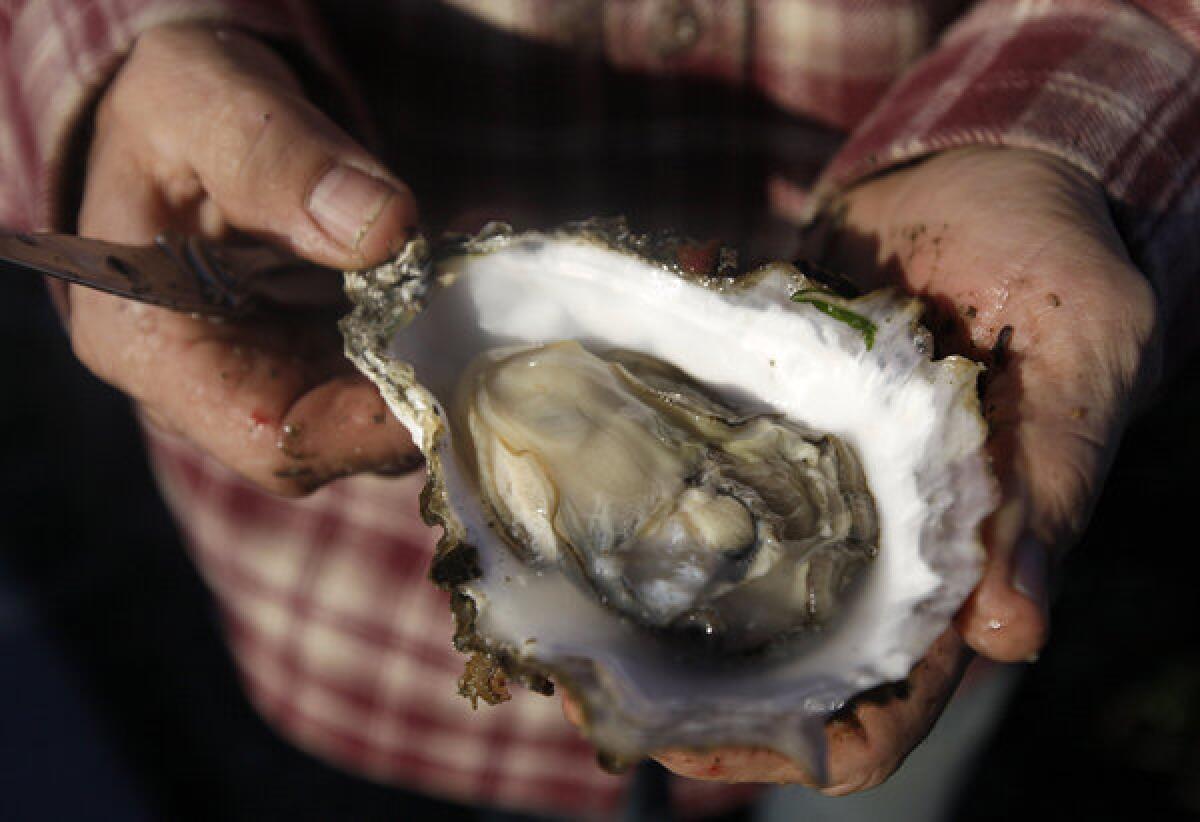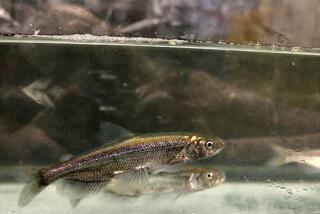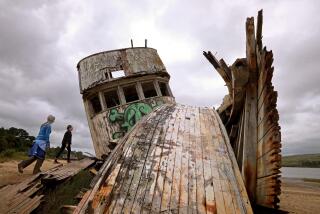Oyster bars say Drakes Bay farm closure means higher prices

- Share via
Restaurants, seafood bars and even other shellfish providers are bemoaning the imminent demise of Drakes Bay Oyster Co., a Northern California business said to be responsible for nearly 40% of the state’s oyster production.
With “demand for good quality shellfish just going through the roof,” the company’s shutdown “is going to squeeze some pricing up,” said John Finger, co-owner of nearby Hog Island Oyster Farm in Tomales Bay.
“They were a big chunk of the local market for sure,” Finger said. “It’s definitely going to have a ripple effect. Everybody’s already scrambling to grow more oysters.”
After a contentious, multi-year fight involving environmentalists, the National Park Service, Sen. Dianne Feinstein and more, Drakes Bay Oyster now has 90 days to clear out of the Point Reyes National Seashore area.
On Thursday, Interior Secretary Ken Salazar refused to extend a federal permit for the company to operate in the 2,500-acre Drakes Estero area in Marin County, effectively designating the surrounding waters as the first marine wilderness area in the contiguous United States.
Times reporter Julie Cart has the full story: Marine wilderness plan wins out over oyster farm.
The decision is sending shock waves through California businesses that rely on the mollusks.
In recent years, West Coast growers have had trouble producing enough seed to supply their oyster stocks, Finger said. Existing producers are struggling to secure more acreage for their farms. Potential new entrants face barriers such as permit fees of $100,000 or more.
“We have a huge seafood deficit in this country and import 86% of the seafood we consume,” Finger said. “What happened with Drakes is just going to make that worse.”
The California oyster market is already a small one, concentrated in Carlsbad, Tomales Bay and Humboldt Bay, with growing beds that periodically have to close down because of rain and algae blooms.
Drakes oysters rarely reached Southern California “because demand for their product in the Bay Area is greater than their inventory,” said Tyler Bell, co-owner of L&E Oyster Bar in Silver Lake.
To sate clamoring customers, Bell said, California oyster sellers also have to ship in shellfish from Alaska, Baja California and the East Coast.
He called the Drakes Bay closure “a tremendous loss” and said that “sourcing California-raised oysters will now be more difficult.”
San Francisco establishment Waterbar currently gets some 10% of its oysters – including all of its fried and baked oysters – from the Drakes Bay farm.
The company was also the only oyster cannery in California, which means Waterbar will have to get its jarred oysters from Washington state, Executive Chef Parke Ulrich said.
“We’ve used them from Day 1,” Ulrich said of Drakes. “It’s a shame to have to lose them, but we’ll just have to pick somebody else up.”
He’s worried, however, that environmentalists’ push to preserve the region could “be the beginning of a snowball effect” that leads to shutting down local cattle farms. “That whole Point Reyes area could become a big ghost town if they keep closing people down as their permits come up for renewal,” Ulrich said.
Salazar and park officials have said they don’t plan to curtail ranching operations.
ALSO:
Foie gras lovers scramble as California ban nears
Batali, Keller, Bayless, 500 other chefs protest seafood fraud
S.F. Chinese group sues over shark fin ban, alleges discrimination
More to Read
Inside the business of entertainment
The Wide Shot brings you news, analysis and insights on everything from streaming wars to production — and what it all means for the future.
You may occasionally receive promotional content from the Los Angeles Times.











